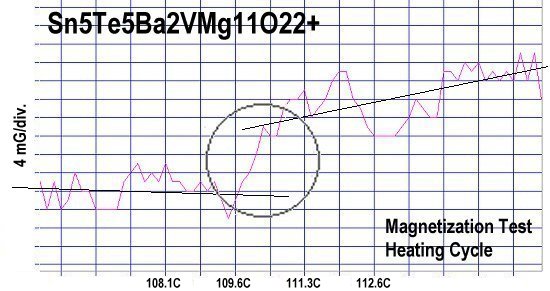
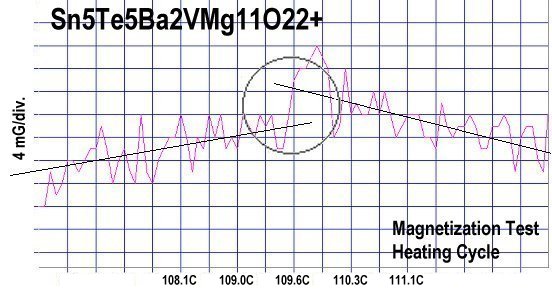


Superconductors.ORG herein reports the discovery of room-temperature superconductor number 45. The compound Sn5Te5Ba2VMg11O22+ exhibits a critical transition temperature (Tc) around 108-109 Celsius with a J212 target structure. The volume fraction is low.[1] Recently the most synergistic combination of elements was identified by maximizing permittivity (dielectric constant) in both the anion and cation layers of a similar Sn-Te-Ba-Mg-O compound. But even that material's performance is eclipsed by this new discovery when tested above 100 Celsius.
The key to very high temperature superconductivity (VHTS) lies in establishing a high dielectric constant (K) across the unit cell. VO2 has a modest dielectric constant of 36 at 25 C. But above 100 C this figure jumps to a colossal 60,000[2] - outperforming the previous-best anion MnO2 by a factor of six. Additionally, substituting vanadium into the manganese atomic site simultaneously increases the planar weight ratio along the C (vertical) axis, making a supplemental contribution to Tc.
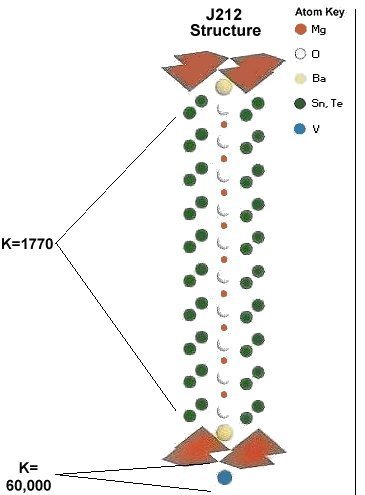
|
The two plots at page top show Meissner transitions just above 109 Celsius when the sample pellet is heated through Tc. The below cooling test displays a transition close to 108 C. All of the transitions had a strength in the range of 7-15 milligauss. Straight lines have been drawn through the noise to help illustrate the level shift, skewing apart at Tc. 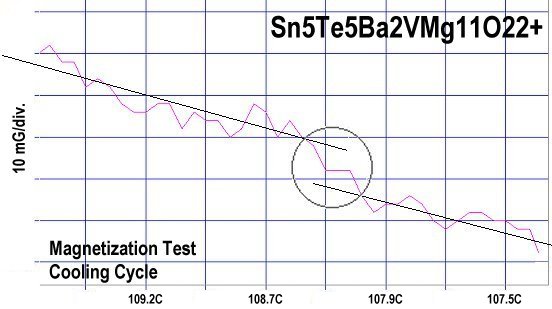
While this discovery does not establish a new record high Tc, it is the most synergistic combination of elements capable of producing superconductivity above 100 Celsius. Were this same mix of elements applied to a (Z+8)212 structure (Sn11Te11), Tc would be near 200 Celsius. In the below graph, Tc is plotted against planar-weight-ratio (PWR) for high Kappa compounds. The Tc point of Sn5Te5Ba2VMg11O22+ is circled to emphasize its position. |
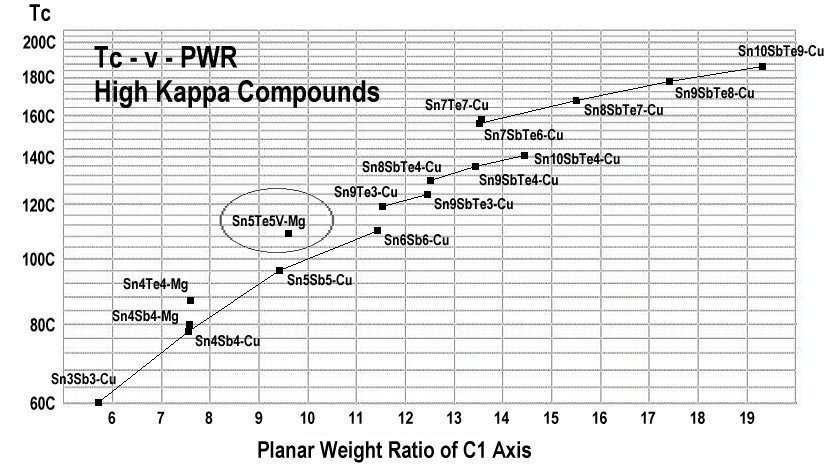
In order to maximize formation of the J212 structure[3], this compound was synthesized using the layer cake method, as shown below. The pellet had approximately 100 interference layers. And, even using this layering technique, the volume fraction is low, requiring very sensitive test equipment.[4]
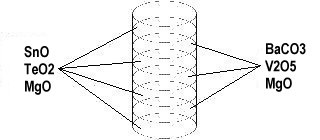
Stoichiometric ratios of the below chemicals were used for the ODD layers:
SnO 99.9% (Alfa Aesar) 4.81 grains...and the below ratios for the EVEN layers.
BaCO3 99.95% (Alfa Aesar) 2.82 grains (decomposes to BaO during calcination, releasing the carbon as CO2)The chemical precursors were pelletized at 60,000 PSI and pre-sintered for 3 hours at 660C and 9 hours at 705C. Then sintering continued for 12 more hours at 880C. The pellet was then annealed for 10+ hours at 500C in flowing O2. Temperature was determined using an Omega type "T" thermocouple and precision OP77 DC amplifier. The magnetometer employed twin Honeywell SS94A1F Hall-effect sensors with a tandem sensitivity of 50 mv/Gauss.
RESEARCH NOTE: The copper-oxides are strongly hygroscopic. All tests should be performed immediately after annealing.
RE-PUBLICATION NOTICE: Elsevier Publishing, dba Elsevier Science, as well as Morris Communications, both print and broadcast divisions, are specifically prohibited from re-publishing any part of this news story.
E. Joe Eck
© 2016 Superconductors.ORG
All rights reserved.
1. These VHTS materials are all multi-phasic and have a low volume fraction due to their reluctance to form a uniquely-coordinated structure.
2. Zheng Yang, et al, Harvard School of Engineering and Applied Sciences, Harvard University, DOI: 10.1103/PhysRevB.82.205101, May 2010
3. The "J" in J212 is a hexavigesimal representation of decimal 19.
4. For the complete list of all 45 RT superconductors, click HERE.
 BACK to "News" page at Superconductors.ORG
BACK to "News" page at Superconductors.ORG